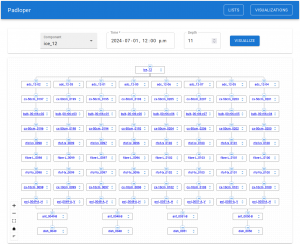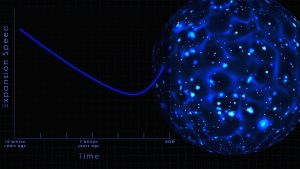
Dhananjhay is originally from New Delhi, India but has been pursuing his undergraduate degree at the University of Alberta, where he is heading into his fourth and final year of the Honours Astrophysics program.
In his free time, he is either playing soccer in the varsity grounds or exploring Toronto (go Blue Jays!!)
What made you decide to participate in SURP?
The diversity of research projects that demanded not only a strong foundation in astrophysics concepts but also other pragmatic skills like coding swayed me to apply to the SURP program. Besides that, University of Toronto’s summer research program is one of the best in Canada when it comes to outreach and skills development, therefore, it was a no-brainer for me to apply.
What is your favourite thing about SURP?
The weekly seminars and talks that integrate so many unanswered questions in astrophysics and cosmology are very intriguing to say the least. SURP also provides a professional environment to learn and grow from. It has given me the flexibility to learn so much new cool stuff within such a short period of time and it would not have been possible without my supervisor, Dr. Adam Hincks, who has been incredibly patient and helpful.
Can you tell us about your research project?
I am building next generation cosmology telescopes in software that will keep track of the analogue signal chains for the HIRAX radio interferometer, and is general enough that other, similar observatories could use it as well (e.g., CHORD, PUMA). The software is named ‘Padloper’ after a tortoise that is endemic to South Africa, and it derives its name from the essence that a padloper tracks the path it traces. The software is sophisticated in a sense that it uses a graph database to maintain the required relationships in the backend data storage instead of a traditional relational database that uses tables to store and establish relations. Despite upcoming telescope systems’ complexity, the software will provide a robust solution for researchers to analyze the recorded data.
Can you explain how SURP has perhaps been different from your undergrad work?
My undergrad work usually revolves around solving mathematical and physics problems but my role as a SURP student requires me to code and develop software programs, which falls completely outside the peripherals of my academic competency, but that is exactly what I love to do ! I enjoy acquiring new skills, especially in computer science, and building meaningful projects using those skills.
What are your plans for the future?
I’m planning on doing a course-based master’s degree in the application of quantum computing in understanding spacetime and gravity alongside a software developer job in a tech company.

This figure represents a set of 8 signal chains at a given point in time. Credit: Dr. Adam Hincks.
SURP Student Spotlight profiles for 2022: dunlap.utoronto.ca/2022-surp-student-spotlight-archives.



